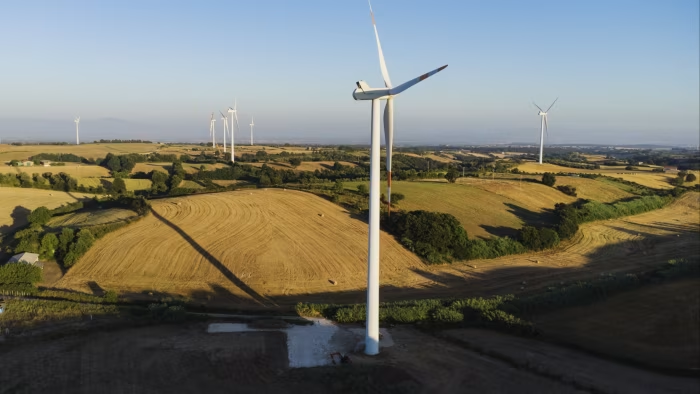Unlock the Editor’s Digest for free
Roula Khalaf, Editor of the FT, selects her favourite stories in this weekly newsletter.
Europe’s leading wind turbine manufacturer, Vestas, has shelved plans to open its biggest factory in Poland, citing sluggish demand in its core European market.
Vestas announced last year that it would build the plant outside Szczecin, close to the Baltic Sea coast, to make blades used in powerful wind turbines.
However, the Danish group has now decided to suspend its investment in a facility that was initially expected to open in 2026 and employ more than 1,000 people.
The company told the Financial Times that the plans had been “paused due to lower than projected demand for offshore wind in Europe”.
It declined to say whether any of its other operations had been affected by the difficult market conditions in Europe, its key market.
The decision underlines the challenges faced by Europe’s offshore wind sector as it navigates higher costs, supply chain bottlenecks and political opposition in the US.
It is also a setback for Prime Minister Donald Tusk’s government and its efforts to cut Poland’s dependence on polluting coal by expanding in green energy and building domestic manufacturing for renewables.
The EU, UK and Norway have a combined offshore wind target of at least 129GW either operating or under construction by the end of the decade.
However, consultancy TGS 4C has said they are on track for only about 84GW, with Denmark and Germany both failing to find bidders for projects in separate auctions over the past 12 months.
European governments are trying to offer attractive terms and support to developers to help the industry, given its strategic importance as a source of low-carbon and domestically generated power.
But, outside China, the sector has struggled to generate returns, while attracting the ire of US President Donald Trump, who has a personal animosity towards the technology.
Ørsted, the world’s largest wind developer, recently outlined plans to retreat from the US and refocus investment in Europe and parts of Asia.
Turbine makers such as Vestas are generally keen to be certain of demand before investing heavily.
Yet any retreat by European manufacturers from their core market could open the door for Chinese competitors to move in and take market share.
Vestas said it “continues to invest in a local manufacturing footprint where offshore wind market volume and certainty allow”.
Offshore wind is central to Poland’s green efforts, with several projects under way that seek to turn the waters off Poland’s north coast into one of Europe’s largest hubs for wind farms.
Warsaw also hoped these can spur the creation of a domestic manufacturing sector capable of supplying turbines to a range of European markets.
Vestas has already invested in Poland by building an assembly plant for the nacelles that hold a turbine’s critical components and by buying a facility that makes blades for onshore turbines.
The planned Szczecin factory, however, was to be its largest Polish project to date, located on land bought in 2023. It was intended to manufacture blades for Vestas’s flagship offshore turbines, each capable of generating 15MW.
Poland’s first offshore turbines are expected to begin operating next year as part of the €4.7bn Baltic Power joint venture between state-controlled Orlen and Canada’s Northland Power, using Vestas as a supplier.
Warsaw wants Baltic Power and other large-scale projects to deliver 18GW of offshore capacity by 2040, roughly half of Europe’s current total.
